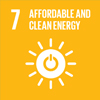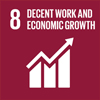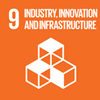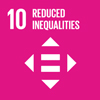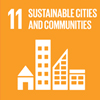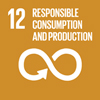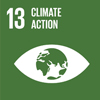Exploring Green Economy Strategies with Carbon Pricing and Trading
- Details
- Written by Najwah
- Category: News
- Hits: 180

Indonesia continues to strengthen its commitment to reducing carbon emissions to address the challenges of global climate change. One proposed strategy is the implementation of a Carbon Economic Value (Nilai Ekonomi Karbon/NEK) through carbon pricing mechanisms.
Ardiyanto Fitrady, Ph.D., a lecturer at the Faculty of Economics and Business (FEB) UGM and Deputy Head of the Energy Studies Center (PSE UGM), highlighted the importance of internalizing carbon emissions through NEK mechanisms during the National Seminar on Green Economy held at the FEB UGM Learning Center on Friday (8/11).
According to Ardiyanto, climate change harms the environment and causes negative externalities that adversely impact various sectors globally. It results in substantial and irreversible economic losses.
He explained that the Indonesian government has demonstrated a strong commitment to reducing carbon emissions through its Nationally Determined Contribution (NDC) targets, aiming for a 29%-41% reduction in emissions by 2030. The government issued Presidential Regulation No. 98 of 2021 to achieve these targets, outlining two main approaches: climate change mitigation through the NEK framework and climate change adaptation via carbon trading mechanisms and levies.
In his presentation, Ardiyanto explained the NEK's approach to mitigation, commonly referred to as carbon pricing. This involves the internalization of carbon emissions, effectively incorporating the external costs of emissions into the production or consumption costs of emitters. This internalization aims to restore the market to a socially optimal level previously distorted by externalities.
"Emissions are not included in producers' production costs. As a result, market failures occur, and social welfare is not optimally achieved," Ardiyanto said.
He explained two mechanisms for internalizing emissions: cap-and-trade and a carbon tax (Pigovian tax). In a cap-and-trade system, the government sets a cap on emissions. On the other hand, a carbon tax imposes a fixed tax on each unit of carbon emitted.
"The potential of a carbon tax is significant, but it does not directly incentivize producers to switch to green technologies as they may prefer to pay the tax," he noted.
Ardiyanto emphasized that NEK can reduce carbon emissions by increasing the operating costs of high-emission products, making them more expensive. This price increase will influence investment and consumption decisions, encouraging producers to adopt low-carbon technologies for more efficient emission levels.
"We need to recognize the externalities of carbon emissions and give them an economic value so that producers have greater incentives to reduce their emissions," Ardiyanto stressed.
He also pointed out that the success of a carbon market depends on the balance between carbon supply and demand. Therefore, the government needs to set emission caps and impose carbon taxes that are higher than carbon market prices to make it more cost-effective for producers to trade in carbon markets.
Finally, Ardiyanto discussed the FASTER principles that can improve the efficiency of carbon pricing mechanisms. These principles emphasize fairness, policy and target alignment, stability and flexibility, transparency, efficiency and cost-effectiveness, reliability, and environmental integrity.
"We need an ecosystem of emissions caps and carbon taxes to incentivize producers to reduce carbon emissions. This approach goes beyond business as usual," he concluded.
Reportage: Najwah Ariella Puteri
Editor: Kurnia Ekaptiningrum
Sustainable Development Goals

